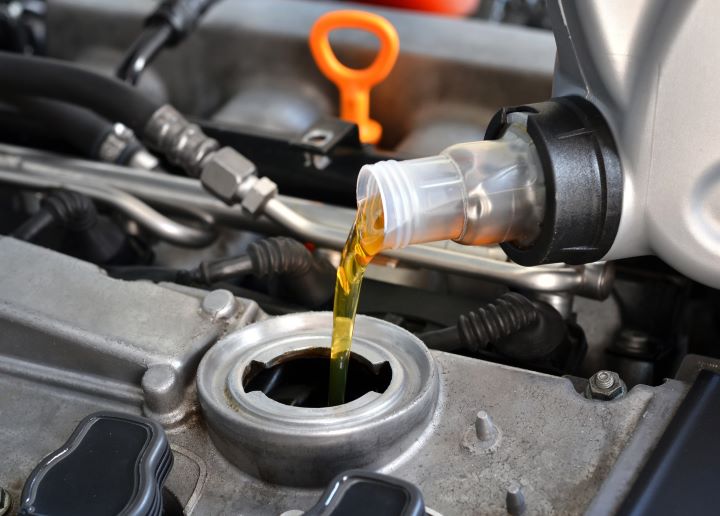The Truth About Modern Oil Change Intervals Explained
For decades, the 3,000-mile oil change rule dominated car maintenance routines—but is it still relevant? With advancements in synthetic oils, onboard diagnostics, and improved engine standards, what drivers once assumed may no longer apply. This guide explores how modern vehicles handle lubrication and what factors influence optimal oil service intervals, based on manufacturer data and evolving technology. Explore how these changes could reframe everyday maintenance decisions.

Synthetic Oil vs Conventional: What’s the Difference?
Synthetic oil and conventional oil differ significantly in their composition and performance capabilities. Conventional oil is derived directly from crude oil through a refining process, while synthetic oil is chemically engineered with a more uniform molecular structure. This fundamental difference provides synthetic oil with several advantages.
Synthetic oil flows more easily at low temperatures, providing better cold-weather starting and immediate engine protection. It also maintains its viscosity at high temperatures, preventing breakdown under extreme conditions. Most modern synthetic oils can last between 7,500 and 15,000 miles before requiring a change, compared to the 3,000-5,000 mile range typical for conventional oils. The improved molecular stability of synthetic oils also means they resist oxidation, sludge formation, and deposit buildup more effectively, leading to cleaner engines and potentially extended engine life.
How Often to Change Oil in Modern Vehicles
The appropriate oil change interval for your vehicle depends on several factors including the type of oil used, your driving habits, and your vehicle’s specifications. Most newer vehicles equipped with electronic monitoring systems and running on synthetic oil can safely go 7,500 to 10,000 miles between oil changes under normal driving conditions.
However, “severe” driving conditions may necessitate more frequent oil changes. These conditions include frequent short trips (less than 10 miles), extreme temperature environments (very hot or cold), stop-and-go driving, towing heavy loads, or driving in dusty areas. Under these circumstances, even vehicles designed for extended oil change intervals might benefit from more frequent service. The best practice is to consult your vehicle’s owner’s manual for the manufacturer’s specific recommendations, which take into account your vehicle’s unique engineering requirements.
Oil Life Monitoring Systems: How Accurate Are They?
Modern vehicles typically come equipped with sophisticated oil life monitoring systems that analyze real-world driving conditions to determine when an oil change is necessary. These systems don’t directly measure oil quality but instead use algorithms that account for various factors including engine revolutions, operating temperatures, cold starts, trip duration, and overall mileage.
The accuracy of these systems has improved significantly over time. Early versions were relatively simple, focusing primarily on mileage, but today’s advanced systems can account for driving style, environmental conditions, and even oil degradation patterns specific to the engine design. Studies have shown that these monitoring systems are generally reliable when used as intended, with many manufacturers conducting extensive testing to validate their accuracy. Following these electronic prompts rather than adhering to a fixed mileage schedule can extend oil change intervals safely for many drivers, reducing unnecessary maintenance while ensuring adequate engine protection.
Best Oil for High Mileage Cars: Making the Right Choice
Vehicles with more than 75,000 miles often benefit from specialized high mileage formulations that address the unique needs of aging engines. High-mileage oils contain additional additives designed to recondition aging seals, reduce oil consumption, and address issues common in older engines.
These specialized formulations typically include seal conditioners that help revitalize hardened seals to prevent leaks. They also contain higher concentrations of anti-wear additives to protect engine components that may have experienced some wear over time. Many high-mileage oils also feature detergents that help clean accumulated sludge and deposits from older engines, potentially improving performance and efficiency.
When selecting oil for a high-mileage vehicle, consider your engine’s condition and any existing issues. If you’re experiencing oil leaks, burning oil, or noise from engine components, a high-mileage formulation might provide benefits beyond standard oil. However, always adhere to your manufacturer’s viscosity recommendations, as using an improper weight can negatively impact engine protection and performance.
Oil Change Costs and Options Comparison
Understanding the cost implications of different oil change options can help you make budget-conscious decisions while maintaining your vehicle properly. The price varies significantly depending on oil type, service provider, and vehicle requirements.
| Service Type | Average Cost Range | Typical Interval | Annual Cost (15,000 miles) |
|---|---|---|---|
| Conventional Oil Change | $25-$55 | 3,000-5,000 miles | $75-$275 |
| Synthetic Blend Oil Change | $40-$70 | 5,000-7,500 miles | $80-$210 |
| Full Synthetic Oil Change | $65-$125 | 7,500-15,000 miles | $65-$250 |
| High-Mileage Oil Change | $60-$100 | 5,000-7,500 miles | $120-$300 |
Prices, rates, or cost estimates mentioned in this article are based on the latest available information but may change over time. Independent research is advised before making financial decisions.
While synthetic oil changes cost more per service, the extended change intervals often result in comparable or even lower annual maintenance costs compared to conventional oil. Additionally, many quick-lube chains offer promotional pricing and loyalty programs that can reduce costs over time. DIY oil changes can save approximately 50% off the service center price, though this requires some technical knowledge and proper disposal of used oil.
Conclusion
Modern oil change intervals have evolved significantly from the traditional 3,000-mile recommendation. Today’s advanced synthetic oils and sophisticated monitoring systems allow many vehicles to go 7,500 to 15,000 miles between changes without compromising engine protection. Understanding your vehicle’s specific requirements, considering your driving conditions, and selecting the appropriate oil type—whether conventional, synthetic, or high-mileage formulations—will help you maintain optimal engine performance while potentially reducing maintenance costs. Always consult your owner’s manual for manufacturer recommendations, as these guidelines are tailored to your specific vehicle’s design and engineering requirements.




